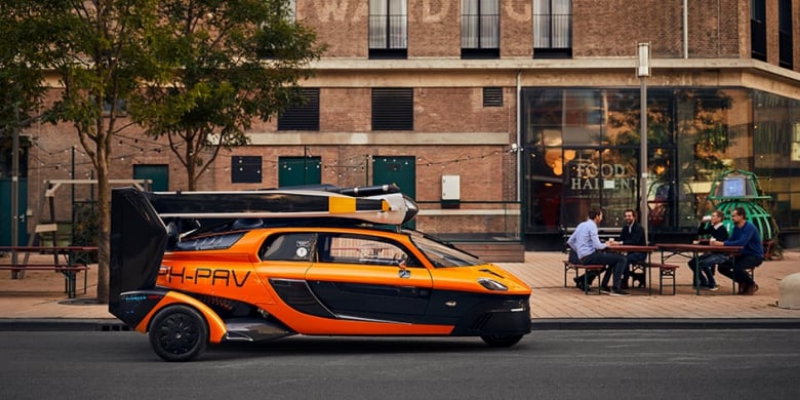, a Raamsdonksveer, Netherlands-based developer of what it hopes will be among the world’s first flying cars (if not the first), obtained approval from the European Union to drive its vehicle on European roads. Sporting license plate J-7 71-PT, PAL-V’s Liberty is now street legal.
Recently the Liberty passed the stringent European road admission tests and now is allowed on the streets with an official license plate. This completed a rigorous and extensive drive test program carried out on test tracks since February 2020. From high-speed ovals, brake and emission tests to noise pollution testing, the PAL-V is now ready to take on the roads.
Mike Stekelenburg, CTO of PAL-V, explained how he experienced this journey:
“With the memories in mind of fly and drive testing our proof of concept, the PAL-V One, I was really looking forward to testing the Liberty. We have been cooperating with the road authorities formany years to reach this milestone. The excitement you feel in the team is huge. It was very challenging to make a “folded aircraft” pass all road admission tests.” Stekelenburg adds: “For me, the trick in successfully making flying car is to ensure that the design complies with both air and road regulations. I feel the energy and motivation in our team to push hard for the last few milestones and get the Liberty certified for flying too.”
As the PAL-V will be undergoing endurance testing for the coming months, people can witness the PAL-V on the European roads from now on. It will be a head turner for sure.
Hans Joore, test-driver of the PAL-V, states:
“When I fired-up the PAL-V for the first time I really got goosebumps! All the effort that we put into it came together at that crucial moment. Hearing the vehicle come to life was just magnificent and driving it was great. It is very smooth and responsive to the steering and with a weight of just 660 kg it accelerates really well. The overall experience is like a sportscar. It feels sensational.”
Since 2015 the PAL-V Liberty design has been also going through aviation certification with EASA (European Aviation Safety Agency). Finalization is expected in 2022. The PAL-V Liberty significantly benefits from the certification experience accumulated in the earlier flight test program with the PAL-V One. Over 1,200 test reports need to be completed before the final 150 hours of flight testing can take place. After this the deliveries to customers will start.
The reservation book is growing beyond expectation. As 80% of the future PAL-V carflyers are new to aviation, some of them have started the training for a gyroplane flying license at the PAL-V FlyDrive Academy.
PAL-V CEO Robert Dingemanse added:
“It’s another great step forward for us, now we ‘drive’ ahead to the last milestones. In parallel we organize roadshows across Europe to demonstrate the PAL-V to customers: Where shall we meet?”
With Italian interior and exterior designs, carbon fiber-based materials and a dual engine, the Liberty’s wings and rotor fold while traversing city streets and highways and then expand when the driver/pilot is prepared to go airborne.
A self-stabilizing aircraft, the PAL-V uses curve stabilization technology and design. Its 100HP engine has a range of about 800 miles (1315 kilometers). The PAL-V has a maximum speed of 99MPH (160KPH) on the ground and 112MPH (180KPH) in the air. It’s got a maximum of altitude of 11,500 feet (3,500 meters). The company hopes to achieve certification from the European Aviation Safety Agency (EASA) by 2022.
Source: Website



